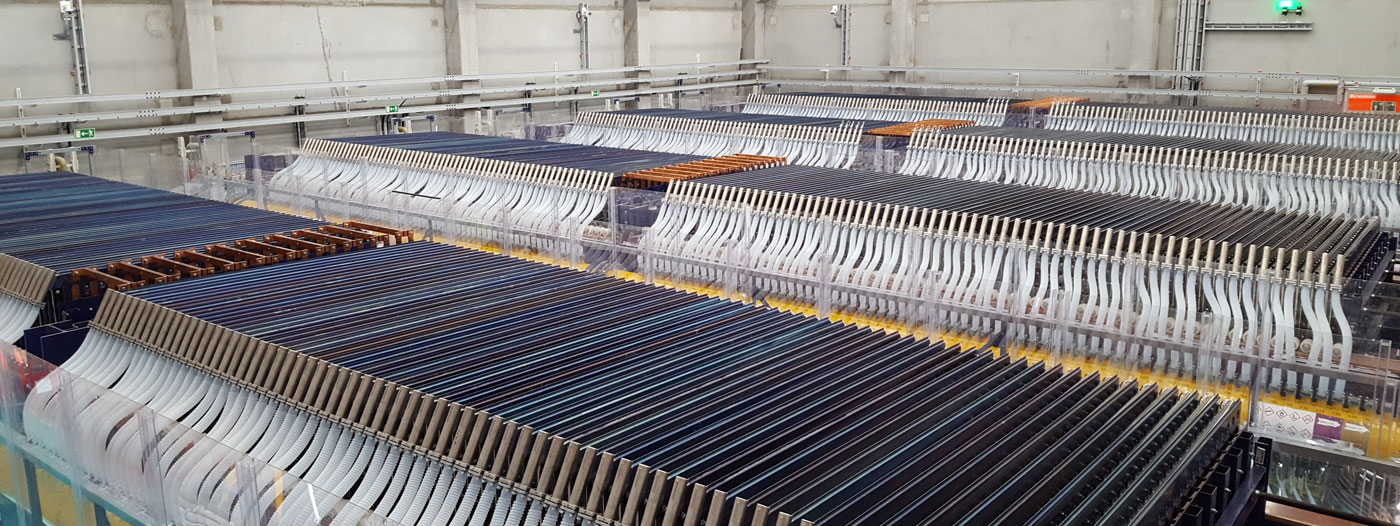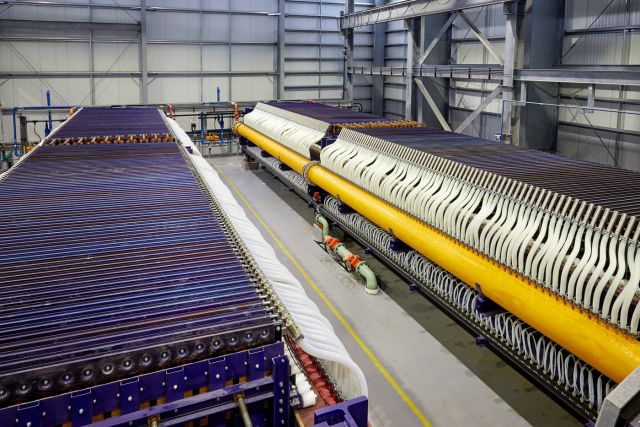Elettrolizzatori
Esistono tre principali processi di elettrolisi industrializzata utilizzati per la produzione di idrogeno pulito e prodotti cloro-alcalini come cloro, soda caustica o ipoclorito:

- Elettrolizzatori a celle a membrana - il processo più moderno e più diffuso, costituito da un anodo in un compartimento anolitico, separato da una membrana a scambio cationico da un catodo in un compartimento catolitico. INEOS BICHLOR Gli elettrolizzatori sono caratterizzati da un design modulare delle celle a membrana per la massima efficienza, sicurezza, affidabilità e semplicità di manutenzione. Scopri come funziona un elettrolizzatore per celle a membrana.
- Elettrolizzatori alcalini ad acqua (AWE) - Utilizzati per produrre idrogeno, gli elettrolizzatori alcalini ad acqua sono costituiti da due elettrodi (uno positivo e uno negativo) immersi in una soluzione elettrolitica, tipicamente una soluzione di idrossido di potassio (KOH), separati da un diaframma o membrana. Quando una corrente elettrica viene fatta passare attraverso l'elettrolita, le molecole d'acqua vicino all'elettrodo negativo subiscono una riduzione, producendo idrogeno gassoso. Scopri di più sugli elettrolizzatori alcalini per acqua e sulle applicazioni per l'idrogeno.
- Elettrolizzatori a membrana - sono dotati di due compartimenti separati da un diaframma permeabile, spesso costituito da fibre di amianto. La salamoia viene introdotta nel compartimento anodico e fluisce nel compartimento catodico. Gli ioni cloruro vengono ossidati all'anodo per produrre cloro e al catodo l'acqua viene scissa per produrre soda caustica e idrogeno con il diaframma che impedisce una reazione tra il cloro e la soda caustica. Aggiorna la tua camera cellulare dalla tecnologia a membrana a quella a membrana con INEOS.
- Elettrolizzatori per celle a mercurio – noti come processo Castner Kellner, il cloro e l'idrossido di sodio sono prodotti dalla salamoia in una cella elettrolitica, dove il mercurio liquido funge da catodo. A causa di problemi di sicurezza per quanto riguarda la salute sul lavoro e l'inquinamento da mercurio, il processo delle celle al mercurio è ora in gran parte obsoleto, con solo pochi impianti ancora operativi a livello globale. Si prevede che, una volta raggiunta la fine del ciclo di vita, le restanti installazioni di celle al mercurio saranno sostituite con processi di celle a membrana. Aggiorna la tua cella di mercurio alla moderna tecnologia a membrana con INEOS.
Elettrolizzatori alcalini per acqua
Esplora l'efficienza e la sostenibilità degli elettrolizzatori alcalini per acqua (AWE). Con un design modulare su misura per una perfetta integrazione, questi sistemi di elettrolizzatori rappresentano una tecnologia di produzione di idrogeno all'avanguardia. Scopri la loro versatilità nello stoccaggio di energia rinnovabile, nella generazione di combustibili puliti e nei processi industriali.

Elettrolizzatori modulari per celle a membrana
L'elettrolisi delle celle a membrana è caratterizzata da un modulo sigillato costituito da due camere, separate da una membrana flessibile a scambio cationico, per evitare la miscelazione di cloro e idrogeno gassoso. Le due camere sono formate rispettivamente dai gruppi anodo e catodo e, una volta collegate a una rete elettrica, è dove avviene l'elettrolisi.
